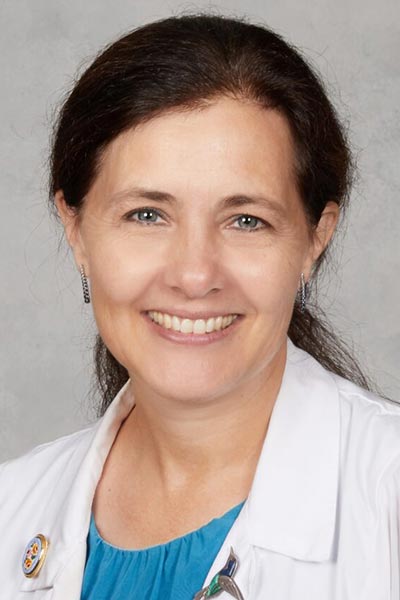The IMpower010 trial has previously demonstrated improvements in disease-free survival (DFS) compared with best supportive care (BSC) for patients with resected stage II-IIIA non-small cell lung cancer (NSCLC). While the trial did not achieve the statistical significance boundary in the intent-to-treat (ITT) population during its first interim analysis, recently published 5-year data as well as an exploratory, retrospective analysis of genomic profiling by whole exome sequencing and clinical association have shown the importance of PD-L1 expression and genomic alterations in metastatic NSCLC.

Investigator Heather Wakelee, MD, presented findings from the exploratory analysis during the 2025 American Society of Clinical Oncology Annual Meeting, reporting that the distribution of mutations and co-occurrence patterns were similar to expected non-squamous and squamous patterns in mNSCLC, except for lower prevalence of STK11 (17%) and KEAP1 (12%) genomic alterations.
The global, multicenter, randomized phase III IMpower010 trial was designed to compare adjuvant atezolizumab with BSC in patients with stage IB-IIIA NSCLC following complete resection and treatment with adjuvant platinum-based chemotherapy. The trial included patients with tumors harboring EGFR mutations or ALK rearrangements.1
The primary endpoints were:
- DFS in the intent-to-treat (ITT) population
- DFS in the all-randomized stage II-IIIA population
- DFS in the PD-L1 SP263 ≥ 1% tumor cell (TC) subpopulation within the stage II-IIIA population1
Key Findings
In a recently published updated analysis, atezolizumab demonstrated DFS benefit compared with best supportive care across most subgroups, particularly in patients with higher PD-L1 expression levels. Notably, patients with EGFR/ALK alterations had less consistent benefits.
Median DFS was 68.5 months versus 37.3 months in the stage II-IIIA PD-L1 TC ≥ 1% subgroup. In the all-randomized stage II-IIIA subgroup, the median DFS was 57.4 months versus 40.8 months. The median DFS was 65.6 months versus 47.8 months in the ITT population, however, it did not cross the statistical significance boundary.
Long-term DFS benefits were observed among those in the stage II-IIIA PD-L1 TC ≥ 50% subgroup with or without EGFR/ALK alterations:
- 3-year DFS: 74.9% vs. 53.2%
- 5-year DFS: 65.1% vs. 44.5%
This long-term benefit was also seen among patients with stage II-IIIA TC PD-L1 TC ≥ 50% who did not have EGFR/ ALK alterations:
- 3-year DFS: 75.7% vs. 55.4%
- 5-year DFS: 66.1% vs. 45.8%
OS trends were similar to those observed in DFS, with greater survival benefits observed in subgroups with PD-L1 expressions of 50% or higher.
Among patients with stage II-IIIA PD-L1 TC expression of at least 50% with or without EGFR/ALK alterations, the 3-year OS was 89.1% versus 77.8%, and the 5-year OS was 82.7% versus 65.3%.
In patients with stage II-IIIA PD-L1 TC expression of 1% or higher, the 3-year OS was 82.1% compared with 78.9%, and the 5-year OS was 74.8% versus 66.3%
Among those with stage II-IIIA TC expression of at least 50% without EGFR/ALK alterations, the 3-year OS was 89.1% versus 77.5%, with a 5-year OS of 82.1% versus 63.7%.
There was no OS advantage for atezolizumab compared to BSC in the all-randomized stage II-IIIA or ITT population.
Among the all-randomized stage II-IIIA cohort, the 3-year OS was 78.7% versus 79.7%, and the 5-year OS was 69.8% compared with 68.8%
In the ITT subgroup, the 3-year OS was 79.3% compared with 81.1%, and the 5-year OS was 70.9% versus 69.8%.
In her presentation of data from the exploratory analysis, Dr. Wakelee showed that in non-squamous disease, STK11, EGFR, and KEAP1 genomic alterations were associated with increased prevalence in PD-L1–negative tumors, and P53 genomic alterations were associated with PD-L1–positive tumors (adjusted P<0.1).
Dr. Wakelee also showed that in non-squamous disease, STK11 mutations were a poor prognostic for OS, but not for DFS, whereas KEAP1 alterations were not significantly associated with poor prognosis for DFS or OS. Neither STK11 or KEAP1 mutations were significantly associated with DFS or OS benefit with atezolizumab compared with best supportive care, according to the data.
Future Directions
These latest results from IMpower010 provide greater insight into the long-term impact of atezolizumab in resected NSCLC. While not all patient groups benefitted equally, those with higher PD-L1 expression appeared to derive the greatest benefit from adjuvant atezolizumab. Patients with EGFR mutations and ALK alterations were eligible to enroll in the trial stratified but were not evaluated as an independent subgroup, making the outcomes less clearly defined. Follow-up is ongoing to assess OS improvement in the ITT population.
References:












